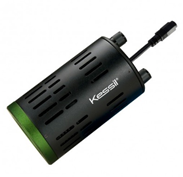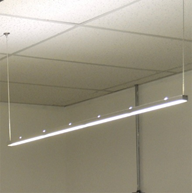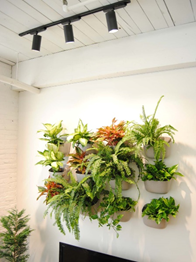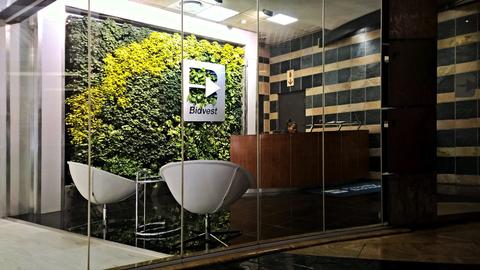The growing demand for indoor living walls
It’s no secret that the number of living wall installations has skyrocketed in recent years. They support health, promote productivity and are universally attractive to the eye. While all living walls are seeing an increase in sales, their greatest growth is in indoor spaces. From Tesla to Microsoft, businesses all over the US and abroad are insisting on breathing life into their stagnant spaces.
.png?width=834&name=how%20to%20choose%20the%20right%20lighting%20for%20your%20greenwall%20(1).png)
While this can largely be credited to increased awareness through the sharing of health and wellness information over the internet, it can also be attributed to the general growth of infrastructures, businesses and buildings. Companies are willing to spend extra money to ensure that their ‘cows are happy and making only the best milk’. A living wall is one of the most popular ways to do this. However, while indoor living walls have the advantage of fewer variables like inclement weather, they do have their limitations – one of the biggest being lighting. Take a look below at some greenwall lighting tips.
Limitation of lighting
Plants need two things to grow – water and sunshine. While living wall systems and regular plant maintenance ensure that living walls are properly watered, lighting has remained an issue for many indoor plant installations. Insufficient lighting is the most frequent cause of living wall failures.
Traditionally the design, location and plant choice for a living wall was restricted by the amount of available sunlight. This not only jeopardised the quality of the living wall but could prevent its installation altogether. This is an issue that has been recently addressed through grow lights.
Grow light science
Grow lights really began to hit the indoor gardening scene with the legalisation of marijuana. Engineers and plant scientists found they were able to replicate the sun’s photosynthetic spectrum with man-made lighting. The latest grow lights can perfectly mimic the desired photosynthetic spectrum to replicate the sun and even be manipulated to best suit the plants you want to grow. Because people grow plants indoors for many different reasons, grow lights are designed to adapt and suit different needs. While most grow lights are designed for agricultural operations and small-scale tabletop plants, there have been very few grow lights designed specifically for living walls which, like other indoor growing systems, have their own unique lighting needs.
What to look for in living wall lighting (SAP rule)
There are several factors to consider when evaluating grow lights for your living wall – power, intensity, color temperature, color rendering, and spectrum. As plant people, the best way to remember this is with the SAP rule - Spectrum, Appearance, Power.
(S) Spectrum
What gives a grow light the ability to grow plants is their photosynthetic spectrum. The reason why plants react to grow lights rather than ambient light is because grow lights target the wavelengths of light that plants respond to. Regular ambient lights neglect to include those wavelengths since they’re outside the perception of the human eye. While plants react best to red and blue, the human eye reacts best to green. In recent years LEDs have become the ideal grow light for this reason. LEDs can be designed to pinpoint the exact desired chlorophyll peaks along the wavelengths that activate a plant’s growth. A basic rule of thumb is; non-flowering plants prefer blue light to encourage leafy growth, while flowering plants prefer red light to trigger blooms and flowers. However, since the human eye must be taken into consideration when designing living walls, it is best to include red, blue and green light in a grow light. These are known as full spectrum grow lights and appear as regular ambient lighting.
(A) Appearance
Unlike many other indoor growing systems, living walls are designed to be admired, which is why the appearance of the light displaying them is very important. Kelvin (K) and Color Rendering Index (CRI) values, are measurements which are used to determine both a light’s appearance and its ability to display. Kelvin measures the colour temperature of a light and is typically preferred at approximately 3000K or 5000K. 3000K is a warm white colour and preferred by interior designers for its inviting ambiance while a 5000K light is a cooler white color and is typically preferred for a crisp and invigorating setting. Colour Rendering Index is used to determine how accurately a light displays true colour. It scores from 0 – 100 with 100 being the most natural representation and highest accuracy of true color.
(P) Power
Power becomes important in two ways when considering living wall lighting – strength and appearance. You want a light that’s strong enough to grow your plants, but not too overpowering or it will become a harsh eyesore in a room. Watts are used to measure the general output of light and Lux and Footcandles are used to measure the intensity and strength with which the photosynthetic light reaches the desired area. It’s always best to measure the wall with a light meter to see how much natural light the wall is already receiving before adding the supplemental lighting. This is important because the grow light will add to any natural light that may already exist in the desired area.
Popular grow lights for living walls
The installation of a living wall is only half the battle. Its long-term success also relies on how well you take care of it Be sure to keep these products in mind next time you consider investing in a living wall.
Kessil - Tuna Sun
According to Kessil, the A160WE/ A360WE Tuna Sun, “replicates the look of natural sunlight on the ocean floor”. While originally designed for fish tanks, the Kessil offers a spectrum that can support plant growth.
|
Spectrum: |
Photosynthetic |
|
|
Appearance: |
Blue |
|
|
Power: |
40W or 90W |
Sunlite - ST30 and ST40
The Sunlite ST30 and ST40 are LED bar lights that maintain the photosynthetic spectrum while giving off white light.
|
Spectrum: |
Photosynthetic |
|
|
Appearance: |
Warm White / Cool White | 75 CRI |
|
|
Power: |
50W |
Soltech Solutions - Highland Series
The Highland is an LED track light designed specifically for living walls. Designed to both grow plants while beautifully displaying them, the Highland incorporates both the photosynthetic spectrum and museum quality lighting in to an LED track light.
|
Spectrum: |
Photosynthetic |
|
|
Appearance: |
Warm White / Cool White | 97 CRI |
|
|
Power: |
30W or 100W |
Lighting is a critically important consideration when planning your green wall. Insufficient light, or even the incorrect light, can cause green wall problems. Need help getting the right lights for your living wall? Contact us.
To learn more about greenwall lighting, watering, care and best practices? Visit our resources page.
Are you interested in learning more about what kind of lighting would best suite your green wall? Click the button below and we'll get in touch.





![Budget Savvy: A Greenwall For Your Office Redesign [UPDATE]](https://blog.growup.green/hubfs/Imported_Blog_Media/Untitled-design-640x427-2.png)
